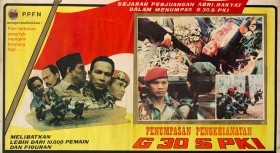I love to persuade people to write in a journal. In 2008 I received a cultural exchange program scholarship and took the opportunity to learn how to bind books in an Etsy class in Brooklyn, USA. After that, I decided to become a bookbinder.
It wasn’t only because of my journaling habit; the decision also fit with my mission to support the literacy movement in Indonesia. This mission is embedded in Tobucil & Klabs, a literacy and hobby community space in Bandung, West Java, that I founded in 2001. The space allows me to spread ideas about literacy through writing and also to share my passion for making hand-bound journals.
When I started bookbinding, no one in my neighborhood had the same interest in exploring binding as a craft, technique, design and art. In Indonesia, where copyright is often not upheld, people think of binding a book as what goes on in the photocopy shop, when people need to bind a document or their photocopied version of War and Peace.
Binding was not considered a design practice or a form of material exploration, certainly not an art form. And if I trace its cultural roots, bookbinding is an imported craft with no traditions in Bandung before Islamic scholars introduced it with their translations of ancient manuscripts. So learning the craft of bookbinding is like learning a new culture, a new tradition for me.
After I learned some basic skills and the logic of bookbinding in the Etsy class, I deepened my skills through a rigorous self-learning process. This is often the way for designers in Indonesia. Books (all imported books), YouTube and social media connected me with other bookbinders around the world, becoming my virtual “tutor and class mate.” The most challenging part of this self-learning process is persistence and consistency. But, the advantage is that I have so much freedom to explore and find many different ways and create authenticity from my own design. I have no boundaries to follow certain artists or designers in this field. I work at a design frontier.
I still need to make some adjustments between ideas and their execution because of the limitation of local sources of those ideas, but living in Bandung gives me access to sources of material, production vendors and other support systems. I promote my works mostly through social media, but I need offline resources like physical space to run production and to explore new ideas.
The Internet became an effective medium not only to connect, but also to create markets, even though there is a ‘niche market’ for hand-bound books. Because of our wide and diverse population, a niche market in Indonesia can equal many thousands of customers.
For me as a designer, social media is the right place to gather appreciation, artistically and economically. That’s why when creating something authentically, social media is a must. That authenticity creates a signature and a reason why people choose my hand-bound books over others. In addition, social media easily creates followers of my designs; and it also enables other people to copy my designs. But I can’t avoid the latter situation. For me becoming a craftsperson or designer or artist in the social media era is about how to create my own brand, one that cannot be copied, it’s like a fingerprint: we are similar, but everybody is different.
Social media such as Instagram and Pinterest have thus become effective media for me to distinguish my brand from others and to gain recognition from fellow bookbinders. When many people repin your work on Pinterest, for example, it gives a sense of confidence that people appreciate your work. This is similar to “likes” on Instagram, especially when someone who likes your work is a fellow bookbinder.
Creating an environment with others who have the same interest is also important to me. Since 2012 I’ve taught bookbinding in workshops in cities across Java and Bali. The workshops are useful in pressing me to think, create and plan ahead. They also contribute to building a bookbinding community, one that can appreciate the bookbinding process. When people learn that making books is not as easy as they thought, they appreciate what I have achieved. Along the way, I hope to find friends who have the same passion for bookbinding as me, so we can support each other mutually.
As an Indonesian I am very grateful to have access to tons of cultural resources, references and elements that I can explore and utilize in order to transform my work. Sometimes looking inwards is more difficult than looking at others for cultural references. This is particularly true of bookbinding, which is an imported knowledge that I have learned. It is a lot of easier to imitate what is already being done and become a follower of a design practice than it is to create something new. But my bookbinding self and brand are an ongoing process. The more I experience, the more I find in my identity the important elements that shape my bookbinding authenticity. All I can do is combine the processes of knowledge and identity from this journey.
In every book I make I don’t hesitate to show who I am and where I came from, indeed, what is my mission. Becoming a craftsperson or designer is like offering something to the world drawn from my personal perspective.
Tarlen Handayani is a bookbinder, founder of Tobucil & Klabs, freelance writer.
This article was first published by Portal Journal of Multidisciplinary International Studies. Also read this interview with Tarlen in which she talks about running an impactful crafts business








Comments